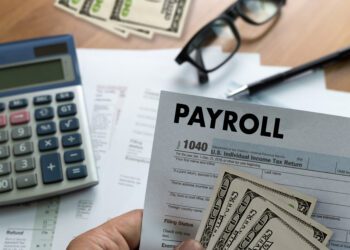Trump’s Tariff Proposals
On the stump, former President Trump has proposed a “universal” tariff of 10 percent (later doubled to 20 percent) and tariffs of 60 percent or more on goods from China, saying that “[o]ther countries are going to, finally, after 75 years, pay us back for all that we’ve done for the world.”
Trump has also promised to withdraw from the Indo-Pacific Economic Framework and other regional non-market access trade frameworks, focusing on areas such as supply chain resilience, that the Administration has begun. Universal tariffs would have a strong inflationary effect, with former Fed Vice Chair Donald Kohn warning of the risk that “the fracturing of the global trading system ends up fracturing the global financial system as well. One thing that keeps [interest] rates low in the US is the flow of foreign funds into the US. . . . That could put upward pressure on interest rates as well.”
Tariffs could also raise ocean freight rates, impacting both importers and exporters, as happened in 2018 when then-President Trump imposed tariffs on China. High tariffs on China could also accelerate a “soft decoupling” of trade relations with China, raising questions about the resilience of supply chains that currently rely on Chinese products or inputs. It is possible that figures such as Peter Navarro, who was Director of the Office of Trade and Manufacturing Policy at the White House, and Robert Lighthizer, who was US Trade Representative, could return in a second Trump Administration. Both favor increasing tariffs, though in different forms (Navarro reportedly favors reciprocal tariffs while Lighthizer favors universal tariffs).
Vice President Harris’ Response Harris has attacked Trump’s trade policy, in 2019 saying it is “trade policy by tweet” and now calling the proposed tariffs a “20 percent sales tax” on consumer goods. Given voters’ concerns over inflation, she links this directly to higher inflation: “[a]t this moment when everyday prices are too high, he will make them even higher,” citing a Center for American Progress study that the tariff proposals would cost the average family $3,900 per year, “a national sales tax on everyday products and basic necessities.” Presidential Authority on Tariffs Several US laws give the President broad authority to impose (or reduce) tariffs. For instance, Section 232 of the Trade Expansion Act of 1962 gives the President authority to raise tariffs in cases where imports threaten national security (this was the authority Trump used for the steel and aluminum tariffs in 2018). Section 232 formally requires an investigation by the Commerce Department before its provisions can be invoked, so it is unlikely it would be used on the first day of a second Trump Administration, but the President can act without consulting Congress. Section 301 of the Trade Act of 1974 gives the President authority to impose retaliatory tariffs if “an act, policy, or practice of a foreign country . . . violates or is inconsistent with, the provisions of, or otherwise denies benefits to the United States under any trade agreement [or] is unjustifiable and burdens or restricts United States commerce [.]” (This was the authority for the general tariffs on China.) The law requires an investigation by USTR and consultations with the relevant foreign government before tariffs can be imposed.
The International Economic Emergency Powers Act is the broadest statute, which gives the President to block all transactions with a designated entity (for instance Cuba or North Korea or Iraq during the Gulf War) upon designation of a national emergency that constitutes an “unusual and extraordinary threat.”
This broad grant of Presidential power lends credibility to the view that a second Trump Administration would seek to impose tariffs on many imports entering the US, particularly from China. Affected parties could easily seek to have these actions overturned in court as overly broad and beyond Congress’ intent, but unless the court stayed the tariffs while the lawsuit is pending, this could lead to uncertainty for importers (and exporters facing the potential threat of retaliatory tariffs by other countries). It is unclear how a court could rule—a Federal court approved President Nixon’s temporary 10 percent tariff in 1971, which he imposed as part of closing the “gold window” and the US balance of payments crisis, but that tariff was imposed as a temporary measure in response to an emergency.
It is unclear how a court might rule now on a universal tariff, particularly if the tariff were similarly designated as “temporary”; a court could be skeptical that Congress intended such broad powers for the President. Harris’ Background and Possible Trade Policies In contrast to former President Trump, Vice President Harris has said little on trade policy during the campaign. On Labor Day, she joined the President in announcing opposition to the proposed takeover of US Steel by Nippon Steel. (The formal review of that deal by the Committee on Foreign Investment in the United States has now been pushed until after the election; it was originally scheduled to be presented to the President on September 23.)
As a Senator, Harris voted against both the Trans-Pacific Partnership and the USMCA agreement, indicating that she approaches trade issues from concerns over labor rights and environmental protection. However, she also said in a debate while running for President in 2019 that “my trade policy . . . is always going to be about saying, we need to export American products, not American jobs. . . . I am not a protectionist Democrat. Look, we need to sell our stuff. And that means we need to sell it to people overseas. This means we need trade policies that allow that to happen.”
On China, she added that “[i]t’s a complicated relationship. We have to hold China accountable. They steal our products, including our intellectual property. They dump substandard products into our economy. They need to be held accountable.” It is also important to remember that trade is extremely important for her home state of California, in areas ranging from agricultural exports to digital trade. Technology policy would be a major question for a Harris Administration—would she be more likely to side with Silicon Valley companies or with privacy advocates? She and others are very concerned about theft of US intellectual property rights, and trade could be a way to support US technology companies. This year, Harris has indicated that she will broadly continue the Biden Administration’s “worker-centric” trade policy. She would certainly continue IPEF and other non-market access regional groupings.
On China, a report by the US International Trade Commission broadly endorsed the current tariffs. Harris would almost certainly keep the current tariffs, including both the tariffs on steel, solar cells, electric vehicles, and other clean energy goods the President imposed in May and the new tariffs on Chinese steel and aluminum goods in certain sectors entering through Mexico. Overall, though, she would likely keep tariffs targeted rather than broad. Given her earlier support for a “meaningful trade policy” and opposition to protectionism, it seems possible, therefore, that she could be more open to negotiating new trade agreements, if the composition of Congress would be favorable to an agreement actually being able to be ratified.
It is also possible that she could seek other agreements to permit tariff-free entry of goods related to the clean energy provisions of the Inflation Reduction Act, similar to the Critical Minerals Agreement the US negotiated with Japan in 2023 (tax credits under that Act are available only for goods made in the US or in countries with which the US has a free trade agreement). During a visit to Indonesia in 2023, a major producer and processor of nickel, she appears to have proposed a similar agreement, which Indonesia formally endorsed, but this did not proceed because of Congressional opposition, ending up as a “robust partnership” on clean energy jobs. The Democratic Platform supports an effort to “mobilize tens of billions of dollars to invest in clean energy development and critical infrastructure with high labor standards around the world,” focusing on “increased supply chain resilience [.]”
Congress
Much, in fact, depends on the composition of Congress following this year’s election. If the Senate flips to Republican control, Senator Mike Crapo (R-ID), who generally supports free trade, would likely head the Senate Finance Committee. The current Chair, Senator Ron Wyden (D-OR) is concerned about the impact of trade agreements on workers and the environment. He, along with many other Members of Congress and Senators, has been deeply concerned about China, including intellectual property rights. Even if there is a bipartisan majority of Members who (quietly) favor more open trade, negotiating trade agreements with a divided Congress might be hard, as one party might see it as politically advantageous. In contrast, a Congress controlled by members of the President’s party might be more open to considering new trade agreements the President puts forward. In the House, bipartisan sentiment against China remains strong. If the House flips to Democratic control, Rep. Richard Neal (D-MA) is in line to head the Committee on Ways and Means, with jurisdiction over trade issues.
USMCA Renegotiation
Whichever candidate wins, one important trade issue for the next Administration will be renegotiation of the USMCA, which must be renegotiated in 2026 if a party objects to its provisions. Harris would be very likely to continue USMCA as is or with slight modifications in worker rights and environmental protection; it is an open question what Trump would do. While USMCA was an accomplishment of the Trump Administration—which forced a renegotiation of the former NAFTA—a Trump Administration could also try to strengthen its provisions in some areas of great sensitivity to Mexico, such as wages or foreign investment in its energy industry, forcing longer negotiations
Conclusion
Clearly one impetus for the interest in trade this year is a focus on working-class voters who have been concerned about job losses from trade. Union voters are important to both candidates this fall in swing states and key Senate races such as those in Pennsylvania, Michigan, and Wisconsin. Unions including the United Auto Workers, AFL-CIO, Service Employees International Union and North America’s Building Trades Unions have endorsed Harris; the Teamsters declined to make an endorsement. In a divided Congress, trade would remain a contentious issue, particularly regarding trade with China and associated issues such as protection of intellectual property rights. It would take significant work, and a determined Administration and business community, to restore the broad consensus in favor of freer trade that prevailed for much of the past 75 years.
By David K. Young & John Gardner/Courtesy Conference Board












